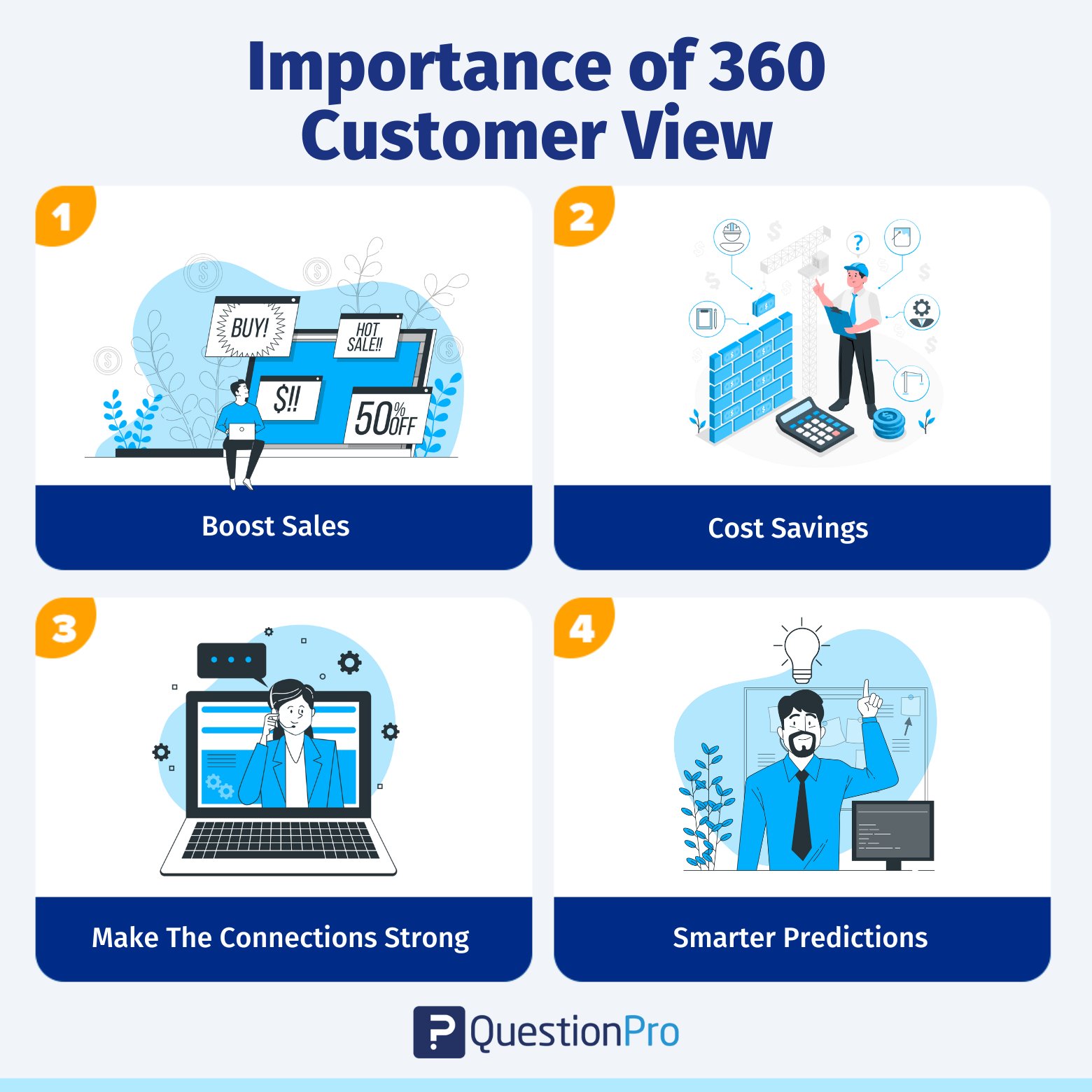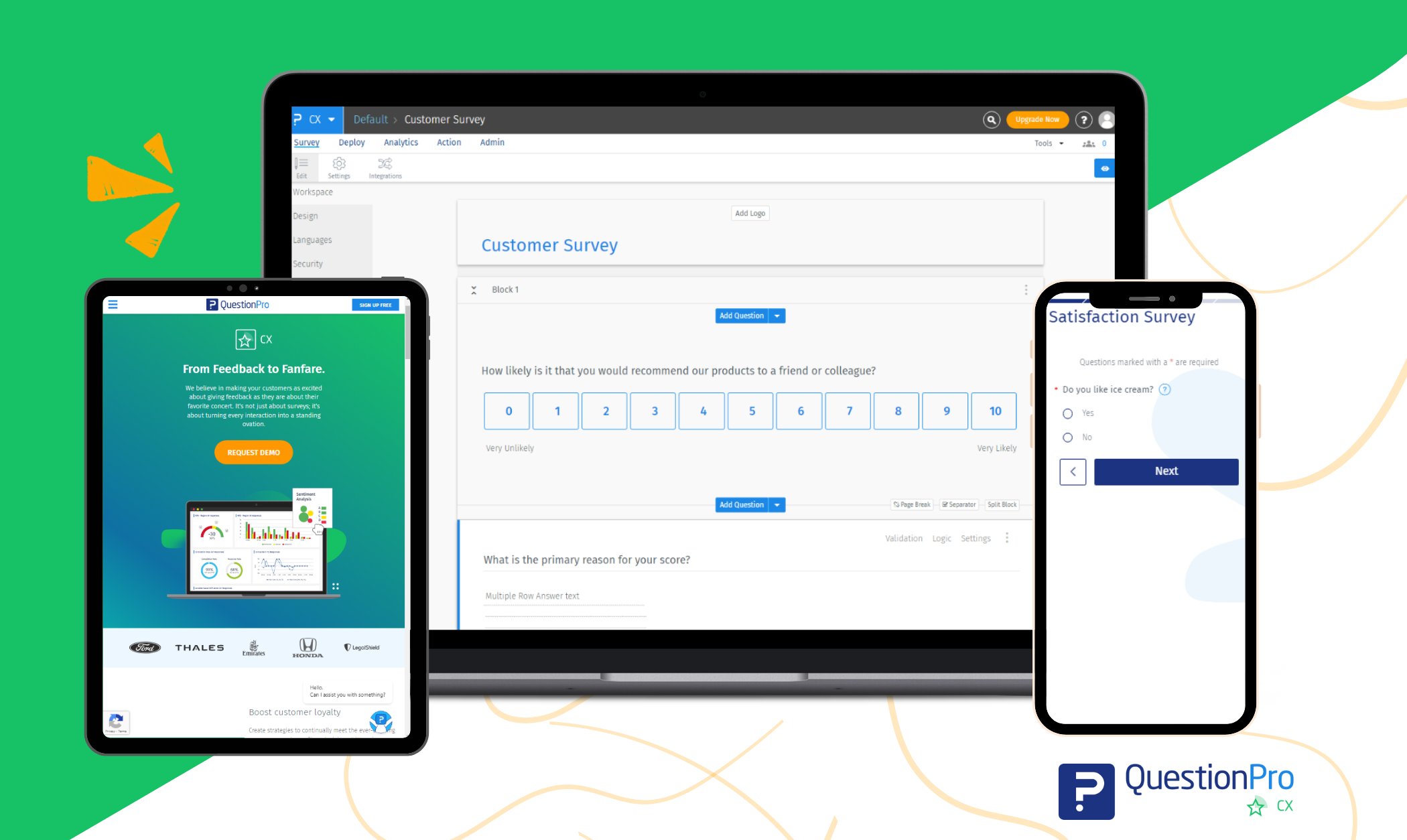
To be successful in business, it’s important to see things from your customer’s point of view. Understanding customers’ actions, feelings about products and services, and the reasons behind their choices all boils down to understanding their needs and motivations. So, how do you figure out what your customers truly want? The key lies in having the 360 customer view.
While you might believe you know your customers well because you interact with them daily, sometimes that’s not sufficient. That’s why it’s vital to gather various perspectives on their needs and examine all available data before deciding where to focus your efforts.
In this blog, we’ll explore a 360-degree customer view, why it’s essential, and how you can create your own.
What is 360 Customer View?
The 360 customer view is a holistic understanding of a customer’s interactions and engagement with a business across multiple customer touchpoints. It integrates and analyzes customer data from various sources, such as purchase history, customer service interactions, website visits, and social media engagement, to create a comprehensive profile.
This all-in-one view offers businesses a comprehensive understanding of customer preferences, behaviors, and history.
- It enables personalized interactions with customers.
- It supports more effective decision-making.
- The goal is to provide a complete, 360-degree picture of each customer.
- This approach enhances the customer experience.
- It strengthens overall customer relationships with the business.
Importance of 360 Customer View
In business, understanding your customers is like having a secret superpower. It’s not about reading minds, but it’s close! It’s about having a 360-degree customer view. Let’s break down why this concept is important for business processes and why you should care about it.

1. Boost Sales
360-degree customer view helps you understand what drives your customers and their past actions. Use this knowledge to spot opportunities for upselling or cross-selling. Predict customer pain points, address hesitations, and guide them from thinking to making a purchase.
2. Cost Savings
Work smarter, not harder, with a 360-degree customer view. Spend marketing resources more efficiently, saving time and getting better results. It helps to get more value for your money with wiser ad spending.
3. Make The Connections Strong
360 customer view helps:
- Gain a complete understanding of your customers for personalized communication.
- Track their position in the customer journey.
- Gauge their sentiments towards your brand.
- Enhance customer loyalty and customer retention.
- Ensure customer satisfaction and happiness.
4. Smarter Predictions
More data equals better predictions. Build accurate models of customer behavior using a 360-degree customer view. Anticipate customer needs by analyzing their purchasing patterns and interactions with your company.
A 360-degree customer view isn’t just about data; it’s about making your business sharper, your customers happier, and your efforts more effective.
How to Create a 360-Customer View?
Now that you understand the importance of having a 360-degree view of your customers for your organization, it’s time to embark on the customer’s journey of creating your own. Develop a complete understanding of your customer’s view by following these steps.
01. Establish a Centralized Data Hub
Before diving into accurate data collection, it’s essential to determine where you’ll store the information for effective utilization. Without a robust infrastructure, crucial details may slip through the cracks or become isolated in separate data silos.
Set up a unified customer data management platform that facilitates seamless collection, storage, and sharing of customer information across your organization. A common choice is a Customer Relationship Management (CRM) or Customer Experience Management platform like QuestionPro.
Regardless of the storage location, ensure it’s easily accessible to teams throughout the organization, allowing them to contribute and enhance customer profiles as needed.
02. Identify Relevant Customer Data
Define the types of customer information essential for creating compelling experiences to avoid wasting time on irrelevant details. Your sales and marketing teams are best positioned to consistently determine what is needed to deliver positive customer experiences.
For example, tracking purchase history and product preferences is crucial if you’re a retail brand. In contrast, a SaaS company with an app on an annual subscription model might focus on details such as the user’s app initiation date and subscription expiration date.
If you’re uncertain where to begin, initiate the process by collecting:
- General profile data (e.g., names and email addresses)
- Contact information (phone numbers, addresses, etc.)
- Demographic data (age, gender, education)
- Geographic identifiers (country, state, or zip code)
- Transaction history (past purchases, amounts spent)
- Website and social media interactions
- Direct communication history (help desk tickets, support interactions, post-sale emails)
03. Enrich Existing Customer Data
Even if you already possess a pool of customer data, there’s a likelihood that some of it is outdated, irrelevant, or incomplete. For example, lead forms may lack addresses. To supplement your data, consider the following:
- Social listening: Monitor social channels for brand mentions, reviews, and opinions to understand customer engagement.
- Third-party data: Fill gaps by incorporating information from external sources, such as market research reports and government statistics, to enhance customer intelligence.
- Customer feedback: Communicate directly with customers through surveys, polls, or conversations. It helps to gain insights into their perceptions, needs, and challenges.
Explore the steps thoroughly to gain a comprehensive understanding of your audience. The more comprehensive your knowledge, the better you can refine the customer service experience.
Example of 360 Customer View
In marketing and sales, having a 360-degree customer view is like putting on special glasses to see your customers in more detail. Let’s take a look at an example to understand this better:
Example
A person visits a website and starts leaving digital footprints through actions like engaging on social media, filling out forms, or clicking on product pages. With a customer data platform, even unknown visitors on the website can be identified by adding extra information before they interact with various touchpoints.
Data enrichment is then applied, layering all your customer data with additional details like demographics or geographic information, making the raw data more useful and insightful.
Why It Matters
- The enriched data, combined with the initial customer interactions, forms a complete 360-degree customer view.
- This comprehensive data can be accessed, modified, and shared across different departments, ensuring a unified customer experience.
- Personalized messages tailored to each customer can be delivered, increasing the chances of turning prospects into loyal customers and boosting revenue.
It enables businesses to understand them better and provide personalized experiences that lead to successful conversions.
How QuestionPro can help to create a 360 Customer View?
Creating a 360-degree customer view with the help of a platform like QuestionPro CX involves a strategic approach to collecting and integrating data from various touchpoints. Here’s a general guide on how you might leverage QuestionPro CX for this purpose:

1. Define Objectives and Key Metrics
Clearly define the objectives for creating a comprehensive customer view. Identify key metrics and information to gather, including:
- Customer satisfaction.
- Customer preferences.
- Demographics.
- Interactions at different touchpoints.
Utilize QuestionPro to create surveys tailored to different aspects of the customer journey. Design questions that capture feedback from:
- Pre-purchase experiences.
- Purchase experiences.
- Post-purchase experiences.
2. Implement Multi Channel Surveys
Deploy surveys across multiple channels, such as email, websites, mobile apps, and social media. This approach ensures that you capture feedback from different customer interaction points. It provides a more complete picture of the customer experience.
3. Integrate Survey Data with Existing Systems
QuestionPro supports integrations to link survey data with your existing customer data systems, such as CRM databases. This integration helps in associating survey responses with specific customer profiles, allowing for a more detailed analysis.
4. Segmentation and Targeted Surveys
Use QuestionPro’s segmentation tools to categorize customers based on demographics, behaviors, or purchase history. This segmentation allows for targeted surveys, ensuring that you gather specific insights from different customer segments.
5. Analyze and Visualize Data
Utilize QuestionPro’s analytics and reporting features to analyze survey data. Look for trends, patterns, and correlations within the data. Visualization tools can help in presenting insights in a more digestible format.
6. Benchmarking and Comparative Analysis
QuestionPro supports benchmarking or comparative analysis features. Use them to compare your performance against industry standards or competitors. This contextual information adds depth to your understanding of the customer experience.
7. Implement Customer Feedback Loop
By using QuestionPro:
- Establish a customer feedback loop to gather feedback continuously.
- Regularly assess the feedback to gain new insights into customer behaviors.
- Update your customer view based on the latest feedback and changing customer behaviors.
8. Collaborate Across Departments
Share the insights obtained from QuestionPro across different departments within your organization. A 360-degree customer view is most effective when it informs decision-making across marketing, sales, customer service, and product development.
Conclusion
The 360 customer view is not just a collection of data; it’s a strategic approach to understanding and engaging with customers on a deeper level.
As explored in this blog, this comprehensive perspective empowers businesses to boost sales, make smarter predictions, and build stronger connections. Exploring QuestionPro, with its survey and feedback capabilities, is a crucial step in this journey.
Businesses can create a holistic customer view by defining objectives, implementing multi channel surveys, integrating data, and collaborating across departments. It enhances the customer experience and drives success.
Embrace the power of understanding your customers from every angle to propel your business forward with QuestionPro!
Frequently Asked Questions (FAQ)
A 360-degree view is a complete and holistic perspective integrating data from various sources to provide an entire picture.
Yes!
Customer 360 is a type of CRM (Customer Relationship Management) system that provides a complete view of the customer by integrating data from multiple sources to enhance customer understanding and relationship management.
To create a 360-degree view of customers:
1. Establish a centralized data hub like a CRM or Customer Experience Management platform.
2. Identify and collect relevant customer data such as profile details, transaction history, and interaction data.
3. Enrich existing customer data through social listening, third-party sources, and direct customer feedback.







